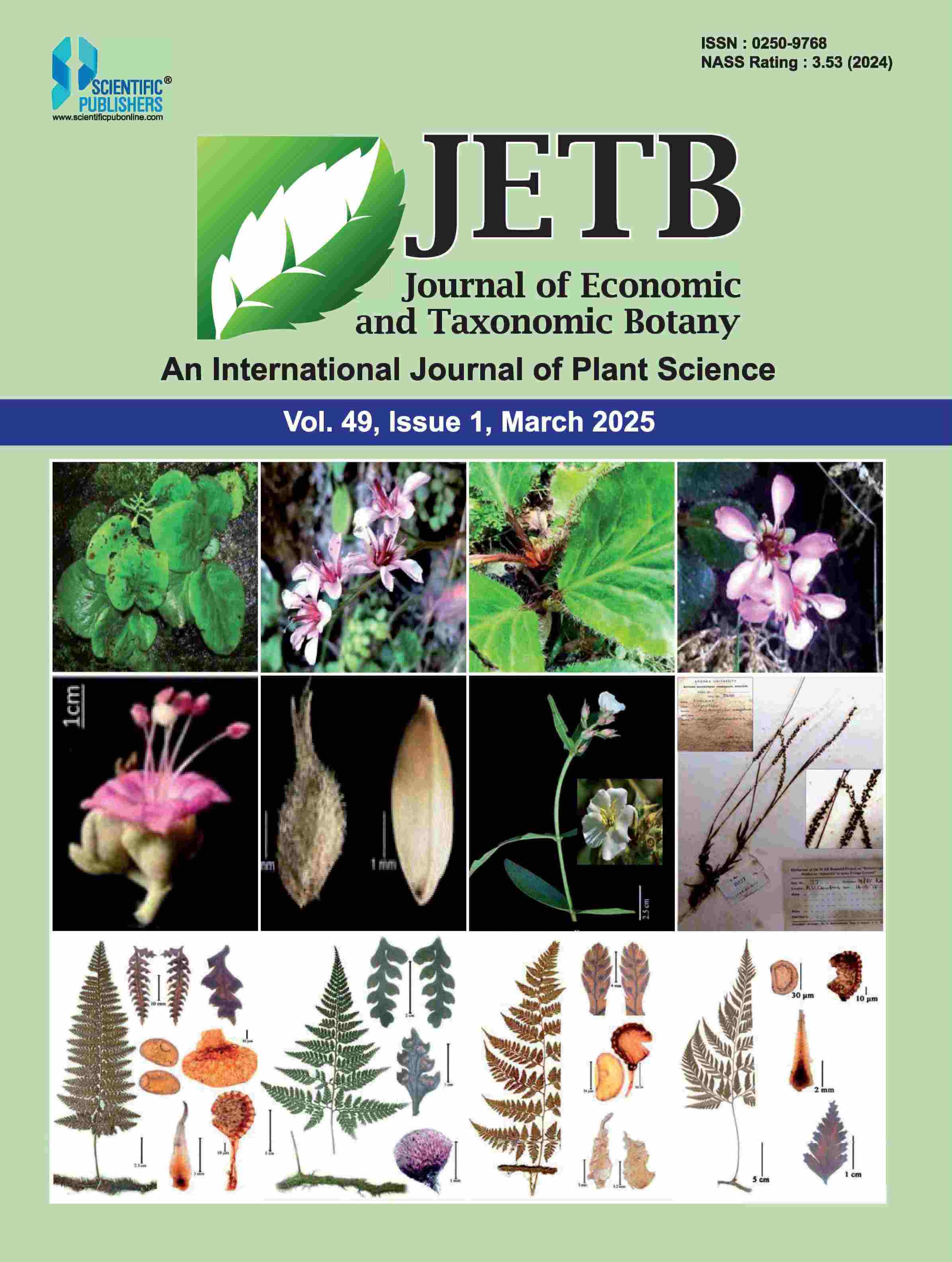Abstract
The drug source
of Pashanbheda in
Himalayan region is usually a mixture of plant parts of two species
of Bergenia Moench (Saxifragaceae), namely B. ciliata (Haw.)Sternb. and B. pacumbis (Buch.-Ham. ex D.Don) C.Y.Wu & J.T.Pan =B. ligulata Engl.) There exists certain
confusion about the identity
of both the species as their habitat ecology and morphology
overlap. These two species are strikingly similar
in pubescent-ciliate leaves and long-stalked inflorescence though they are distinct
in their overall
morphology, nature of ligules,
rhizome and the distribution along altitudes and latitudes. Several research studies of drug efficacy have shown that B. pacumbis is more
effective than B. ciliata. The present study, through
a field and lab-based comprehensive study revisited these species in terms of habit, habitat, external morphology, macromolecules and pharmacog- nosy to diagnose and distinguish them which are often confused, misidentified and continued to be gathered
in the field and/or used as mixed crude
drug as a source
of Pashanbheda. The principal source
of the bioactive compound bergenin is in its rhizome
though bergenin, with its structural diversity and analogues, is not specific
to the genus Bergenia but also found in Saxifraga siberica of the family and reported from as many as 33 different Angiosperm families, from no less than 120 species. By shedding light on these aspects, this study contributed to a refined understanding of Pashanbheda’s sourcing and potential applications, addressing the intricate interplay between taxonomy, pharmacology and tradi- tional
knowledge. More importantly, the two contested
species of Bergenia
are now treated as infraspecific taxa (varieties) of B. ciliata based on nomenclatural priority and taxonomic
need. The required new combination and a status
novum was proposed for B. pacumbis under B. ciliata.






